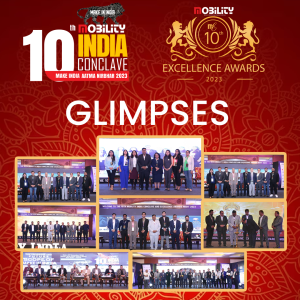Apple announced a major acceleration of its work to expand recycled materials across its products, including a new 2025 target to use 100 percent recycled cobalt1 in all Apple-designed batteries. Additionally, by 2025, magnets in Apple devices will use entirely recycled rare earth elements, and all Apple-designed printed circuit boards will use 100 percent recycled tin soldering and 100 percent recycled gold plating.
In 2022, the company significantly expanded its use of key recycled metals, and now sources over two-thirds of all aluminum, nearly three-quarters of all rare earths, and more than 95 percent of all tungsten in Apple products from 100 percent recycled material. This rapid progress brings Apple closer to its aim to one day make all products with only recycled and renewable materials, and advances the company’s 2030 goal to make every product carbon neutral.
“Every day, Apple is innovating to make technology that enriches people’s lives, while protecting the planet we all share,” said Tim Cook, Apple’s CEO. “From the recycled materials in our products, to the clean energy that powers our operations, our environmental work is integral to everything we make and to who we are. So we’ll keep pressing forward in the belief that great technology should be great for our users, and for the environment.”
“Our ambition to one day use 100 percent recycled and renewable materials in our products works hand in hand with Apple 2030: our goal to achieve carbon neutral products by 2030,” said Lisa Jackson, Apple’s vice president of Environment, Policy, and Social Initiatives. “We’re working toward both goals with urgency and advancing innovation across our entire industry in the process.”
Charting Progress to 2025
Apple has significantly expanded the use of 100 percent certified recycled cobalt over the past three years, making it possible to include in all Apple-designed batteries by 2025. In 2022, a quarter of all cobalt found in Apple products came from recycled material, up from 13 percent the previous year. Cobalt is a critical material in the batteries used in most consumer electronics, including Apple devices, enabling high energy density while also meeting Apple’s robust standards for longevity and safety. Apple-designed batteries found in iPhone, iPad, Apple Watch, MacBook, and many other products represent a significant majority of the company’s use of cobalt.
Progress in Responsible Sourcing of Primary and Recycled Materials
As Apple reduces its reliance on newly mined minerals, it is also pursuing ways to directly support communities whose livelihoods depend on mining. The company is partnering with experts such as the Fund for Global Human Rights to provide support for frontline human rights and environmental defenders, including in the African Great Lakes region, as well as vocational education programs that enable members of local communities moving away from mining to build skills and pursue new opportunities.
Apple sources primary minerals responsibly and drives the highest level of human rights and environmental standards across its supply chain. Apple was the first electronics company to publish a list of cobalt and lithium refiners in its battery supply chain, with cobalt in 2016 and lithium in 2020. In 2017, the company mapped its supply chain for rare earths. And since 2015, every identified smelter and refiner for tin, tungsten, tantalum, and gold has participated in independent third-party audits.
In the transition to recycled and renewable content, Apple has prioritised 14 materials based on environment, human rights, and supply impact that together account for nearly 90 percent of the material shipped in Apple products: aluminum, cobalt, copper, glass, gold, lithium, paper, plastics, rare earth elements, steel, tantalum, tin, tungsten, and zinc.
In 2022, about 20 percent of all material shipped in Apple products came from recycled or renewable sources. This includes the first use of recycled copper foil in the main logic board of iPad (10th generation), the introduction of certified recycled steel in the battery tray of MacBook Air with the M2 chip, 100 percent recycled tungsten in the latest Apple Watch lineup, and the aluminum enclosures found in many Apple products, made with a 100 percent recycled aluminum alloy designed by Apple.
Innovating for the Future of Recycling
Apple’s work to pioneer new research and development for end-of-life disassembly and recycling has helped make this progress possible. Through extensive efforts including partnerships with leading research institutions and the Material Recovery Lab in Austin, Texas, Apple engineers and experts are developing innovative ways to give materials in Apple products new life, and helping inform design decisions that support disassembly and recovery.
If you have an interesting Article / Report/case study to share, please get in touch with us at editors@roymediative.com/ roy@roymediative.com, 9811346846/9625243429.






